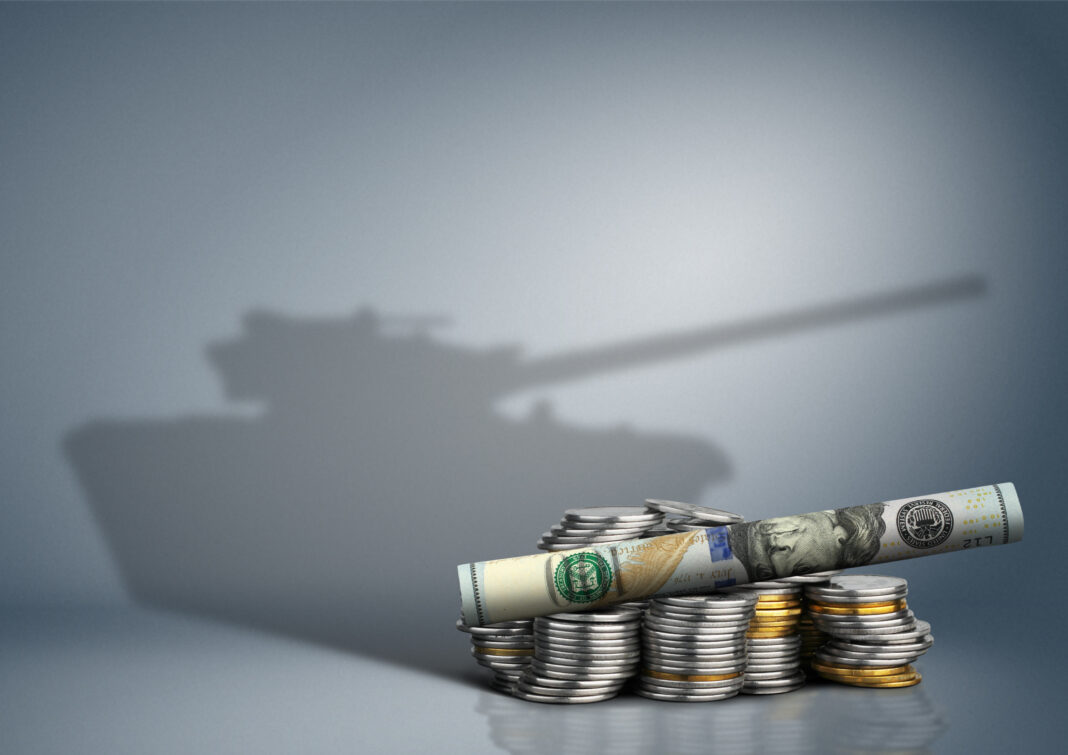by Ambra Visentin
Over the past five years, European countries have almost doubled their arms imports and their dependence on US suppliers is at an all-time high. At the same time, the volume of arms transfers in the world has remained more or less unchanged, but there has been a major shift in the balance with the Russia-France rochade and the positioning of the latter as the second largest exporter. These are the highlights of the Stockholm International Peace Research Institute’s (SIPRI) annual report, which compares imports and exports of arms, military vehicles and other war-related equipment over five-year periods. In this way, the data smooth out sudden fluctuations that are statistically less relevant and provide average trends.
In the years 2019 to 2023, the demand for arms was particularly high in European countries. The 94% increase in imports can be attributed to several factors. One is supplies to Ukraine, which has become the world’s fourth-largest importer. But this is not the only reason for the increase in European imports. None of the countries on the old continent has its own large defence industry. As the threat of Russian expansion grew, governments ran for cover by building up their military capabilities.
The French rise
France has become the world’s second largest arms exporter for the first time. The United States still leads, but Emmanuel Macron’s country has overtaken Russia with a 47% increase in exports and in the face of a shrinking Russian market (-53%) caused by sanctions over the war in Ukraine. Overall, however, France and Russia are neck-and-neck in the trade in military equipment, with 11% of the market each. A far cry from the US (42%). In any case, France has taken over some of Russia’s target markets by meeting the arms needs of non-European countries that used to do business with Moscow. In addition to political reasons, there are also technical ones. China, for example, is now capable of producing high-quality weapons.
The “French rise” is being played out beyond Europe’s borders. The sale of the Rafale to India, Qatar and Egypt has played an important role. From 2014 to 2018, France exported 23 Dassault Aviation fighters, while from 2019 to 2023 it will sell 94, accounting for a third of its exports. As the SIPRI report points out, France, which has been trying to sell its equipment to its neighbours for years, is still unable to do so. The share of its sales in Europe has not yet reached 10% and would not have reached 5% without Greece’s purchase of 18 Rafale fighter jets. Overall, 42% of French exports go to Asian and Oceanic countries and 34% to the Middle East. India is by far the largest recipient of French arms, accounting for 30% of exports.
Germany is the world’s fifth largest arms exporter. Some of the weapons produced here stay in Europe, but not all. Egypt has bought a number of frigates and submarines. Israel, on the other hand, has bought ships and armoured vehicles. Singapore has also joined the ‘customer column’ with its first purchases of submarines.
Global developments
Looking at the global development of the arms trade, the overall increase in imports between 2019 and 2023 is modest at 3%. The regions with the highest arms imports are Asia and Oceania. According to the SIPRI researcher, this is due to tensions between China on the one hand and Taiwan, Japan, the Philippines and Singapore on the other. The Middle East and Europe follow.
Europe’s dependence on the US
The United States is more than ever the dominant military power. Its sales have increased in Australia, Japan, South Korea in the face of the growing Chinese threat, and in Europe. The US industry has increased its sales of military aircraft (420 in the last five years), which do not seem to fear the French Rafale.
Many European countries have invested heavily in US weapons, which have a very long service life. With the Russian-Ukrainian conflict continuing and tensions escalating in the Middle East, business could remain buoyant for a long time to come.
Cover image by Dimj on Shutterstock
























